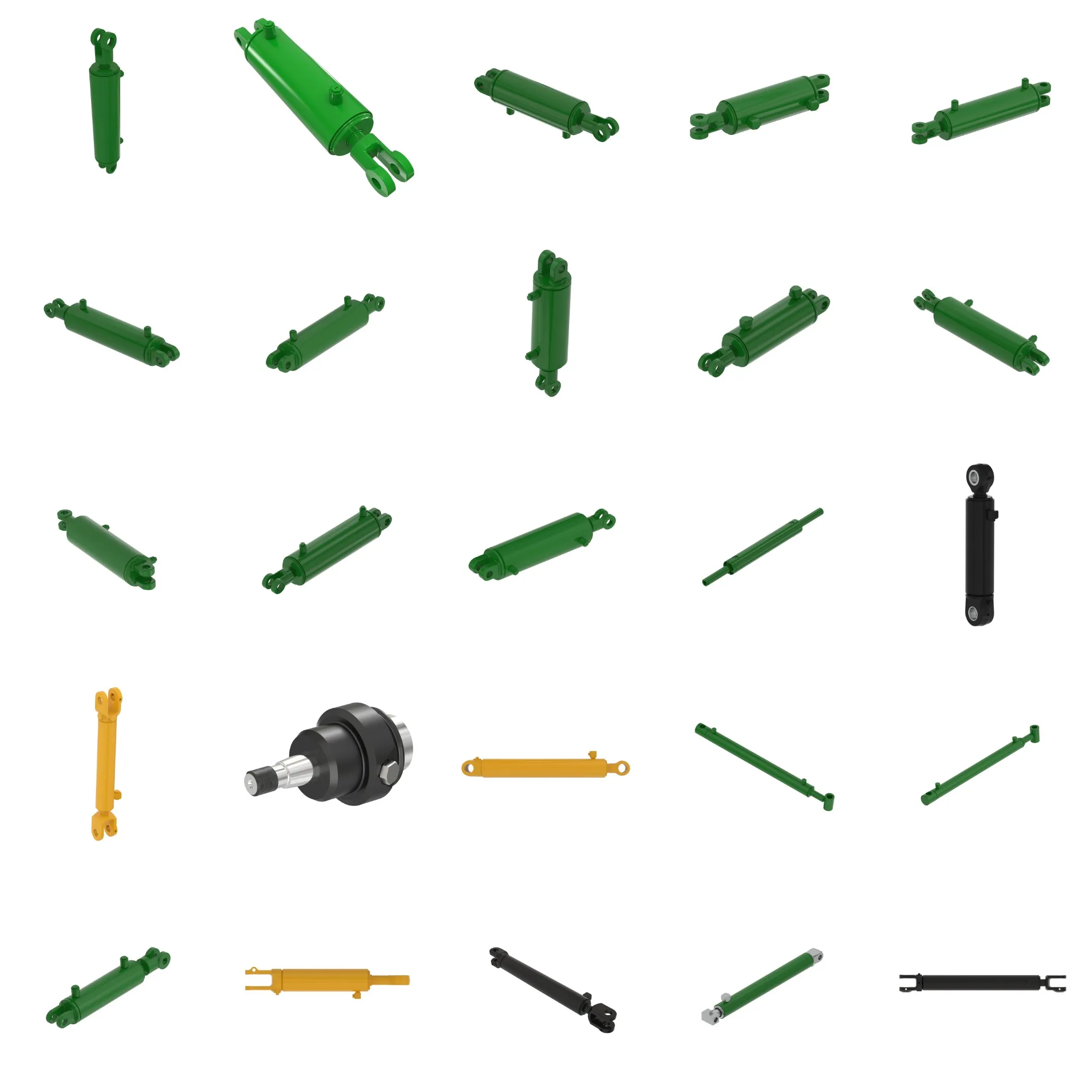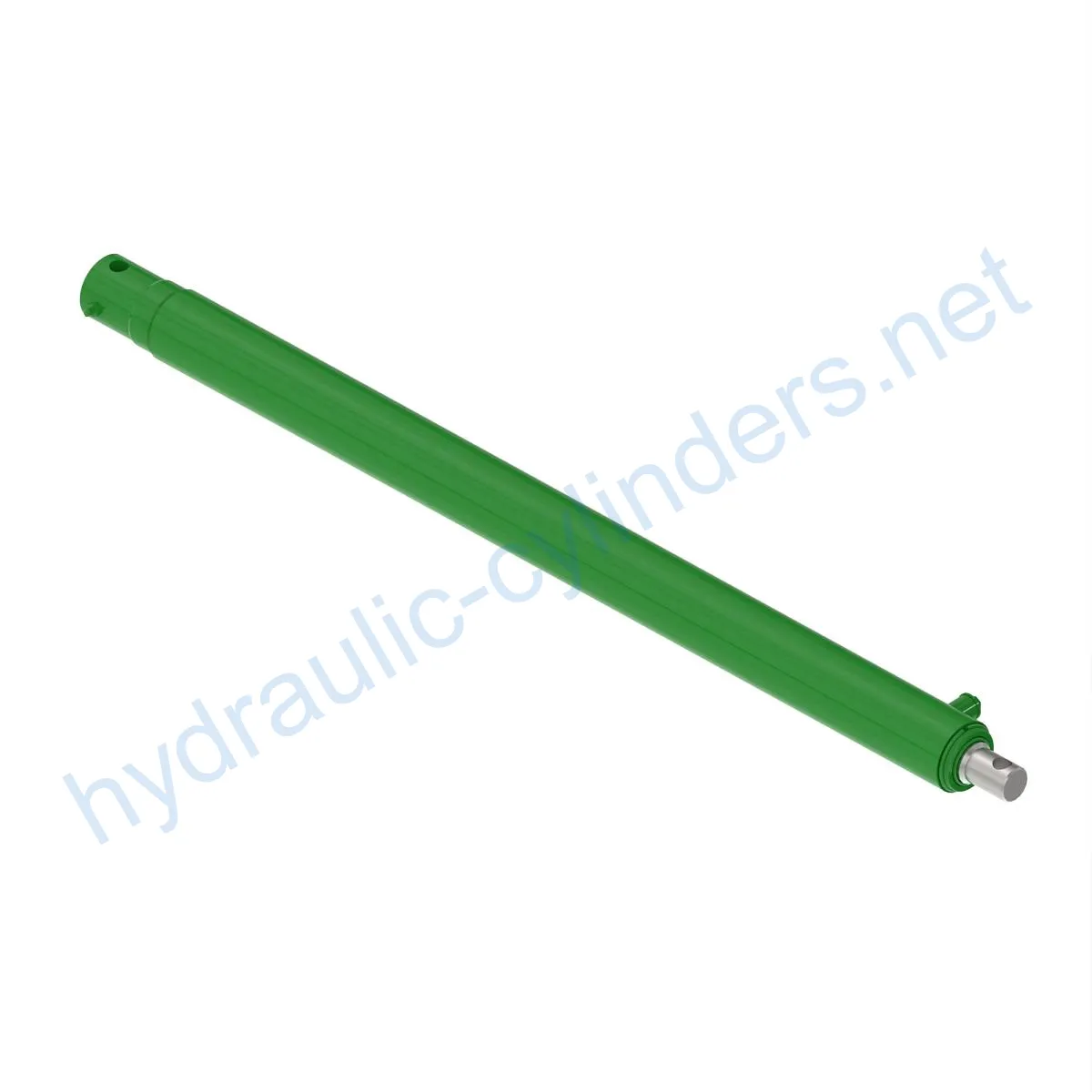Replacement Of AHC11230 Gate Hydraulic Cylinder
Als één van de fabrikanten, de leveranciers en de exporteurs van van de hydraulische cilinders mechanische producten, bieden wij hydraulische cilinders en veel andere producten aan.
Neem contact met ons op voor meer informatie.
Mail:sales@hydraulic-cylinders.net
Fabrikant leverancier exporteur van hydraulische cilinders.
Introduction
The Replacement Of AHC11230 Gate Hydraulic Cylinder is an essential component for various machine models. This hydraulic cylinder weighs 35.13 lbs, has a height of 2.75 inches, width of 3.75 inches, and length of 40.5 inches. It is compatible with models 450E, 450M, 451E, 451M, 451R, 459, 459E, 550M, and 551M.
Product Definition
The Replacement Of AHC11230 Gate Hydraulic Cylinder is a device that uses hydraulic power to convert fluid pressure into linear mechanical force and motion. It is used to power various machines, including excavators, cranes, tractors, and harvesters, to ensure the proper functioning of their various components.
Product Specifications and Compatibility
The Replacement Of AHC11230 Gate Hydraulic Cylinder has a weight of 35.13 lbs, height of 2.75 inches, width of 3.75 inches, and length of 40.5 inches. It is compatible with models 450E, 450M, 451E, 451M, 451R, 459, 459E, 550M, and 551M.
Product Features
- Improved equipment performance: Replacing damaged or worn-out hydraulic cylinders can restore the normal operation capability of the equipment, ensuring its performance in various applications.
- Enhanced safety: Regularly replacing hydraulic cylinders can reduce safety hazards caused by cylinder failure, ensuring the safety of operators and equipment.
- Overload protection: New cylinder designs usually consider better overload protection mechanisms, improving safety.
- Quick installation: Modern hydraulic cylinder designs usually consider ease of installation and replacement, reducing downtime.
- Standardized components: Many hydraulic cylinders are standardized products, making it easy to obtain replacement parts on the market.
We can produce this product, offering a perfect replacement for these hydraulic cylinders.
Applications
The Replacement Of AHC11230 Gate Hydraulic Cylinder is used in various machines across different industries. Here are some scenarios:
- Excavators: The hydraulic cylinder in the arm or bucket of an excavator may be damaged due to long-term use or overload and needs to be replaced to restore normal operation.
- Cranes: The lifting arm hydraulic cylinder of a crane is prone to wear and tear during frequent lifting and lowering and needs to be regularly replaced to ensure safety.
- Tractors: The hydraulic cylinder in the front loader of a tractor may leak or experience performance degradation due to continuous lifting and tilting operations and needs to be replaced.
- Harvesters: During harvesting, the hydraulic system undergoes high pressure, and the cylinder may become damaged due to fatigue, requiring timely replacement to maintain work efficiency.
- Automated production lines: Hydraulic cylinders are used to control robotic arms and other automation equipment. If a cylinder fails, it can affect production efficiency and needs immediate replacement.
- Die casting machines: In high-pressure and high-temperature environments, hydraulic cylinders may experience performance degradation. Regular replacement can ensure product quality.
- Mining equipment: Hydraulic cylinders are used in mining equipment to lift and move heavy objects. Due to the harsh working environment, regular inspection and replacement are necessary to avoid equipment failure.
- Bulldozers: The wear of the hydraulic cylinder in the bulldozer’s push arm can cause a decrease in pushing capacity and needs to be replaced to maintain operational efficiency.
Maintenance
Here are some common maintenance tasks:
- Regular check-ups: Regularly checking the hydraulic cylinder and its components can help detect any potential issues and prevent further damage.
- Proper lubrication: Adequate lubrication is essential to ensure the hydraulic cylinder’s smooth operation. Using the right type of oil and lubricating the cylinder at the right intervals can extend its life.
- Seal replacement: Seals prevent leaks and help maintain pressure. Replacing worn-out seals can help protect the cylinder from dust, dirt, and other contaminants.
During installation, it is essential to provide proper guidance on aligning the cylinder. We recommend using the appropriate mounting brackets to secure the cylinder. We provide recommended inspection, repair, and replacement procedures, replacement parts, and rebuild services to maximize the cylinder’s lifespan.
Safety and Environment Considerations
When using hydraulic cylinders, it is crucial to follow safety measures to avoid accidents. For example, it’s essential to ensure that the equipment is securely grounded and that the hydraulic system is depressurized before any maintenance or repair work. Additionally, it’s essential to dispose of used hydraulic oil and other hazardous materials properly.
Troubleshooting and Common Problems
Here are some common issues and their solutions:
- Leaking seals: Leaking seals can cause pressure loss and reduced cylinder performance. Replacing the seals can prevent further damage.
- Overheating: Overheating can occur due to high temperatures or insufficient lubrication. Regular maintenance and proper lubrication can prevent overheating.
- Seized or stuck piston: A seized or stuck piston can result from contamination or insufficient lubrication. Disassembling and cleaning the cylinder can resolve this issue.
Preventive measures can help minimize potential issues, such as regular maintenance, proper lubrication, and cleaning the cylinder regularly.

Design Considerations and Selection Criteria
When selecting a hydraulic cylinder, it is essential to consider several factors, including load-bearing capacity, sealing performance, durability, safety, and maintenance. Here are some design considerations:
- Load-bearing capacity: The hydraulic cylinder’s size and strength should match the machine’s load capacity and application requirements.
- Sealing performance: The hydraulic cylinder needs to have proper sealing to prevent leaks and maintain pressure.
- Durability: The hydraulic cylinder should be made of high-quality materials to ensure durability and long lifespan.
- Safety: The hydraulic cylinder should have proper safety features, such as overload protection, to prevent accidents.
- Maintenance: The hydraulic cylinder should be easy to maintain, with easily replaceable parts and proper lubrication channels.
Using various seals, such as piston seals and rod seals, made of wear-resistant materials like polyurethane and nitrile rubber, and carefully treated cylinder and thread surface can improve the hydraulic cylinder’s sealing performance and durability. Regularly adding the appropriate amount of hydraulic oil for lubrication can also extend the hydraulic cylinder’s lifespan.
Installation Guide
To install the hydraulic cylinder correctly, follow these steps:
- Ensure that the equipment is securely grounded and that the hydraulic system is depressurized before installation.
- Align the cylinder with the mounting brackets and use the appropriate bolts and nuts to secure it in place.
- Connect the hydraulic hoses and ensure that the cylinder is correctly aligned.
- Test the hydraulic cylinder’s operation to ensure that it is functioning correctly.

Conclusion
Our company is a leading manufacturer and distributor of hydraulic cylinders in the domestic and international markets. We provide various products, customized services, and efficient production equipment, with international certifications and quality standards. Our company values professionalism and prioritizes customer satisfaction, providing after-sales services and technical support.
Author: lyl
Take a Tour of Our VR Factory:
Take a tour of our VR factory with the following
Hydraulic Cylinder Application:


